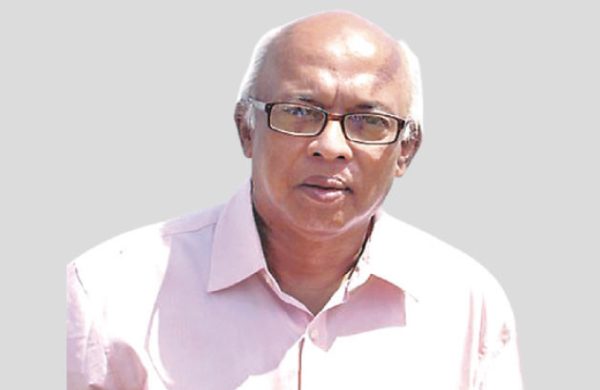Does Scientific Communication Require Scientists’ Understanding of Public?
- Update Time : Sunday, October 6, 2024

-Dr Kanan Purkayastha-
In his book The Making of a Scientist, Anne Roe said, “Nothing in science has any value to society if it is not communicated and scientists are beginning to learn their social obligations.” Roe, a neuroscientist realised that the communication of science with society is an important matter. But when communicating science with the public what motivates scientists most? It appears that at the societal level motivation varies. There are four key motivations for communicating science with the public: a utilitarian imperative, where one thinks that science gives people technical skills and knowledge that will be useful in their wider lives; an economic imperative, where science can develop a technologically skilled workforce because science adds to the output of the country; the cultural imperative, where one believes that science represents shared heritage; the democratic imperative, where one thinks that science affects most of the major decisions in society, so it is important that the public are able to understand the meaning of basic scientific interpretation.
Even though scientists hold different kinds of motivations to communicate science with the public, there are some unwritten rules about science communication such as no public communication before publication, no public communication before the productivity of a researcher is over, popularisation remains for some senior scientists and young should focus on their research. However, it has been realised by the scientific community that one should move from the deficit model to the dialogue model. This means that instead of thinking about the public understanding of science, scientists need to set up a dialogue with the public and also think about the notion of scientists’ understanding of the public. This means bringing members of the public and stakeholders together in dialogue about scientific research or emerging technology before research and development trajectories are established. For example, the UK Research and Innovation invests around six billion each year to bring a positive impact on their society, economy and lives through creating new knowledge and driving innovation.
In order to ensure scientists’ engagement with the public, some changes have been brought forward to any grant application. This includes science excellence and pathways to impact. The pathway encompasses academic, economic and societal impact. Academic impact is the demonstrable contribution that excellent research makes to scientific advances, across and within disciplines, including significant advances in understanding, method, theory and application. Economic and societal impact is the demonstrable contribution that excellent research makes to society and the economy, of benefit to individuals, organisations and nations. This impact matters because spending public money should ensure the benefits of the society where accountability comes. Argument about the engagement is that research can improve if scientists engage more beneficiaries effectively. So, this will ensure quality. Increasing impact means maximising the benefit and attractiveness of research and innovation and this in turn will enhance the reputation of the country.
There are activities one may pursue in order to engage the public about scientific matters. These include but are not necessarily limited to institutional open day; public lectures; engaging with policymakers; working with teachers and schools; being interviewed by newspaper journalists; engaging with non-governmental organisations; writing for non-specialist public; public dialogue events; working with science centres and museums; judge competitions. However, Carl Sagan said, “Science is a way of thinking much more than it is a body of knowledge.” So, the question is— Does the public think the way scientists think?
Philosopher Schopenhauer said, “Science is not a taxi cab that we can get in and out whenever we like. It is rather an express train that once we board it, we must take wherever it may go.” The public is a complex mix of individuals of varying age, gender, race, socioeconomic status, education and cultural background. When communicating science, one needs audience targeting. When a science communicator follows this strategy, he or she needs to consider effectiveness, connection and receptiveness. In fact, the audience needs to be taken into consideration. It is therefore important to consider demographic data, attitude surveys and the interest of the targeted audience.
The public view of science can be ascertained through some examples. Mapping public perception is one of the important issues before communicating scientific issues. Risk and uncertainty are two important factors when one communicates scientific issues with public. The scientific logic of risk and public logic of risk are different. A scientist defines risk in terms of probability, which is the multiplication of likelihood and severity. In the public sphere, risks may take on political, ethical and emotional dimensions.
Translation is another important factor when the target language is different from the source language. In this scenario, one has to consider semantic equivalence, conceptual equivalence and normative equivalence between languages when communicating scientific ideas and opinions. Semantic equivalence means the choice of terms and sentences so that the meaning of the source language is preserved in the translation. In the case of conceptual equivalence, a concept independent of the word is used to operationalize the relevant concept. The degree to which a researcher deals with a problem created by societal differences is known as normative equivalence. These are the important factors one should consider when communicating science with the general public.
Above all, if we accept that science is a part of society and that some science and technology is more sensitive than other fields on account of its societal impacts, then science communication must accommodate this reality. It may be unrealistic to add sophistication in ethics and other related issues in the training of scientists. It is surely not unrealistic to envision science communication as a coalition of different competencies that collectively address the intuitive public, economists, politicians and ethicists. It is well known that a society advances in a sustainable and collectively acceptable manner. So, wider and more effective engagement between scientists, policymakers and the public can ensure scientists’ understanding of the public.
_____________________________________
The writer is a UK-based academic, advisor (Science & Environment), columnist and author



















